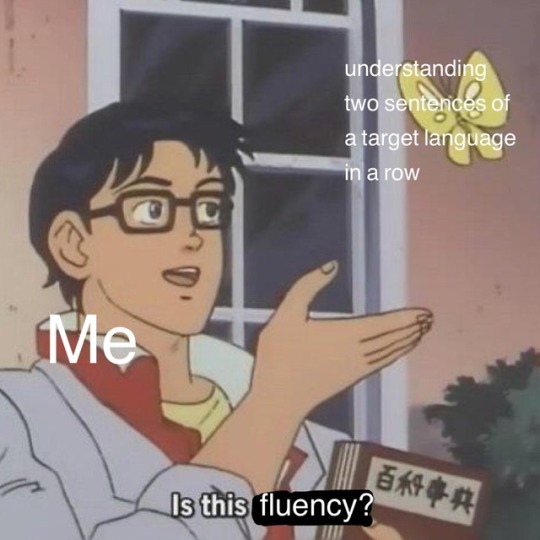Don't wanna be here? Send us removal request.
Text
いろどり · irodori - Japanese for life in Japan
(。•̀ᴗ-)✧ resources

IRODORI is a useful website made by The Japan Foundation. It is a series of 3 textbooks, with audios and materials completely free, focusing on developing skills useful for life in Japan.
Whether you are planning to come to Japan in the future and want to learn what you should be able to do before you arrive, or whether you are already living in Japan and wish to check your Japanese ability and increase the number of things you can do, we sincerely hope that this textbook will help you achieve your goals. - "what is irodori" website page.
The textbooks are super organized, divided in: starter (A1), elementary 1 and elementary 2. Finishing elementary 2 means having an A2 level [At A2 level, you can hold short, basic everyday conversations on familiar topics.]
I recommend styling your learning method with the goal you have in mind. You can understand more about it reading the post I made.
Hope it was helpful! Let me know and let's share resources~
またね~@inkichan
꒰ა ˚₊ ✧・┈・╴﹕꒰ ᐢ。- ༝ -。ᐢ ꒱﹕╴・┈・𐑺 ‧₊˚໒꒱
868 notes
·
View notes
Text
Japanese Reading Resources for Absolute Beginners
A question I encounter often is "How much Japanese should I study before I can begin reading in Japanese?"
From my experience as a learner and reader myself and from managing a Japanese book club for other learners I can honestly say that you can start way earlier than you probably think!
There are many resources that only require knowing hiragana. Those texts usually teach vocabulary through pictures and only use basic grammar.
Some are even simpler than that: The Japan Foundation's Hiragana Books are great for those, who are still remembering hiragana characters. Every short book introduces only 1-2 new characters, so it's a great reading exercise for those who've just started.
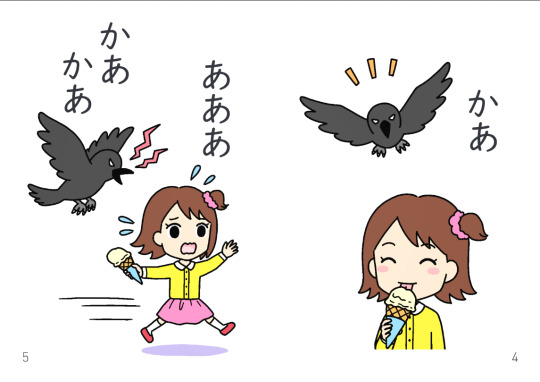
The free graded reader 「どうぞ、どうも」 by the NPO Tagengo Tadoku only uses the words 「どうぞ」 and 「どうも」 to write an entire story. Again, this makes for a great exercise in reading hiragana and understanding context. Another "level 0" recommendation by the same NPO would definitely be 「しろい?くろい?」. This book uses the full range of hiragana characters but the grammar is simple and all used vocabulary is illustrated.

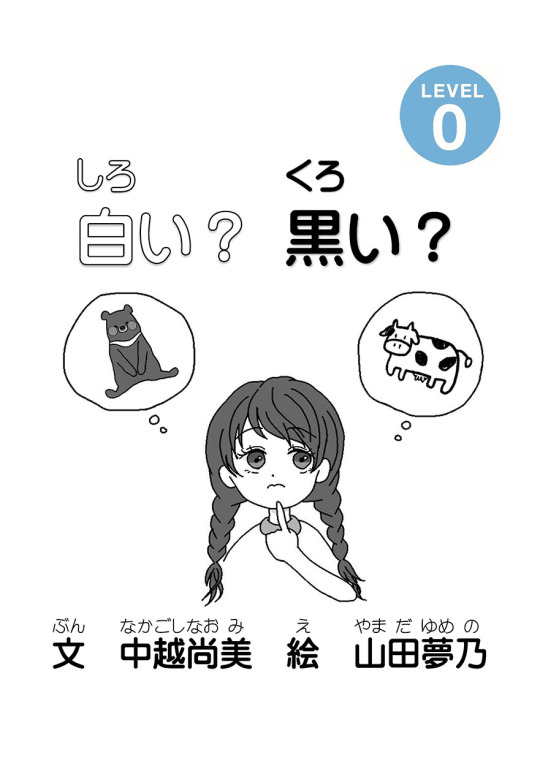
Another site with great resources for absolute beginners is Nihongo Tadoku Dōjō. If you have memorized both hiragana and katakana and know how the particles を and で work you will be able to read this text about stationary (ぶんぼうぐ) and understand everything by looking at the pictures!
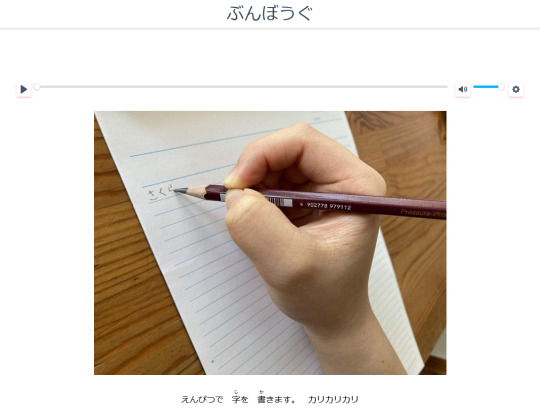
The resources linked so far can all be accessed completely free on the linked websites. If you have the money to spare, please also have a look at the box 「スタート」 from the series reberubetsu nihongo tadoku raiburarī published by the NPO Tagengo Tadoku and ASK (affiliate link). This box includes 8 little books in very simple Japanese.

All these texts for absolute beginners will get you started reading in Japanese with very little knowledge of characters and vocabulary.
Reading in Japanese is a skill that requires practice. But once you get used to it, it can be such a valuable tool to reinforce new vocabulary and grammar. So please don't wait until you're "ready" before you start reading - start early at your own level!
1K notes
·
View notes
Note
Salut! J'ai une question sur les pronoms de COD et en/y. Si je dois remplacer une partie d'une phrase qui commence par ce/cet/ces/cette, je dois utiliser quel pronom? Par example: Ce gâteau est trop sucré, je ne veux pas ___ toucher. Merci!
Salut!! Wow alors c’est une très bonne question et c’est marrant quand on me la pose parce que moi je le fais automatiquement!!
Donc en effet we have ce/cette/ces, equivalent to the “this” in “this thing” (wow english is so banal lol)
When we want to use “en” or “y”, it’s to replace the noun that goes with “ce/cette/ces”
“en” is the equivalent of “some” “y” is the equivalent of “there”
They always go before the infinitive verb. Let’s take an example for each
J’aime cette pomme. Je vais en manger.I like this apple. I will eat some.
Il est trop beau ce pays. J’aimerai y aller un jour.This country is beautiful. I’d like to go there one day.
PS: “y” can also replace the “it” you find at the end of sentences, for example
“ce gâteau est trop sucré, je ne veux pas y toucher” is “this cake is too sweet, i don’t want to touch it”
“il ne faut pas y faire trop attention” is “we shouldn’t give too much attention about it”
86 notes
·
View notes
Text
That scene in the shining where he breaks down the door but instead of jack nicholson its the doulingo owl
85K notes
·
View notes
Text
beautiful french words ✿
ange – angel (masc.)
baleine – whale (fem.)
bisou – kiss (masc.)
brindille – twig (fem.)
brûler – to burn
brume – mist (fem.)
câlin – hug (masc.)
chaleur – heat (fem.)
chatoyer – to shimmer
chaussettes – socks (fem.)
chouchou – my little cabbage, said as a term of endearment (masc.)
citronnade – lemonade (fem.)
citrouille – pumpkin (fem.)
coquillage – seashell (masc.)
croquis – sketch (masc.)
dépaysement – the feeling of being in another country, the weird feeling you get from things being different from what you’re used to. (masc.)
doux – soft
écarlate – scarlet
éclatant – brilliant, dazzling, gleaming
effleurer – to touch or brush against
empêchement – something that keeps you from doing something (masc.)
épanoui – blooming, joyful, radiant
éphémère – ephemeral
étoile – star (fem.)
feuilles – leaves (fem.)
flâner – to stroll aimlessly
floraison – bloom (fem.)
grelotter – to shiver
hirondelle – swallow (bird) (fem.)
libellule – dragonfly (fem.)
loufoque – wild, crazy, far-fetched
luciole – firefly (fem.)
myrtille – blueberry (fem.)
noix de coco – coconut (fem.)
nuage – cloud (masc.)
orage – thunderstorm (masc.)
pamplemousse – grapefruit (masc.)
papillon – butterfly (masc.)
parapluie – umbrella (fem.)
pastèque – watermelon (fem.)
piscine – swimming pool (fem.)
plaisir – pleasure (masc.)
pleuvoir – to rain
plonger – to dive
retrouvailles – the feelings of seeing someone again after a long time (fem.)
sirène – mermaid (fem.)
soleil – sun (masc.)
sortable – someone you can take anywhere without being embarrassed
tournesol – sunflower (masc.)
17K notes
·
View notes
Note
Hi Emma, I hope this is not a weird question but i have been finding a writing app that allow you to write on a background of your choice ( like Zenwriter but it's not available on Mac), so do you have any recommendation? Thank you and have a good day
Hi! Not a weird question at all. Here are some alternatives:
Write!
FocusWriter
ia Writer
WriteRoom
Byword
CalmlyWriter
Ommwriter
You too x
264 notes
·
View notes
Photo




“Over this mountain
and then over all the rest.
We cannot be stopped.” Daily Haiku on Love by Tyler Knott Gregson
334 notes
·
View notes
Photo


Sometimes I just listen to the end of this song. (Am I Right Boy by Fran Palermo)
993 notes
·
View notes
Text
hey guys look what i discovered today: very awesome resource for anyone learning french and writing anything: BONPATRON
you enter in your text and then check it and it tells you any grammar or spelling mistakes you have!!

and even better: it tells you whats wrong and how to fix it if you hover over the text:

theres all kinds of cool features and even tho theres a 250 word limit (unless u buy the software) its still super helpful for making sure your essays, projects, or even just emails make sense!!!! thank u for listening!
7K notes
·
View notes
Photo
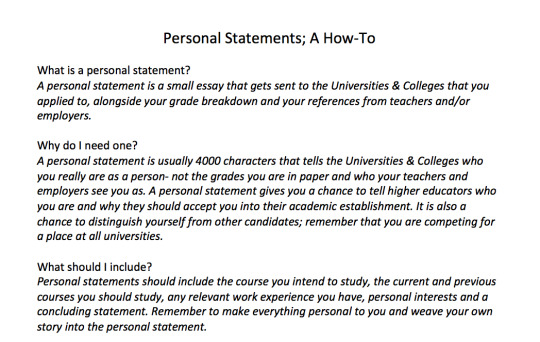


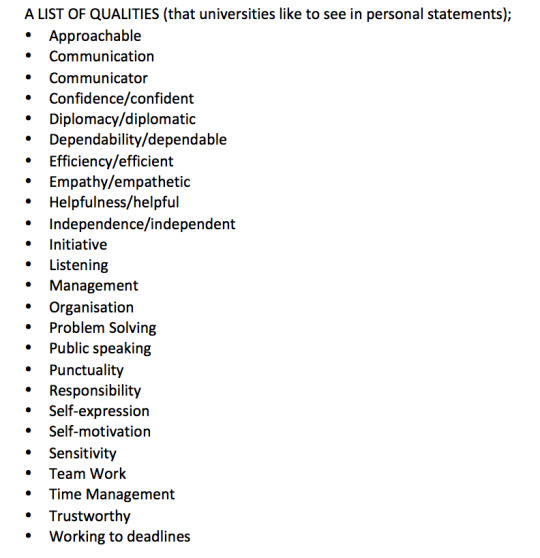

08-01-2017;
for anyone writing a personal statement here’s some advice I collated from countless sheets I have been given over the last three years. This is all sound advice, as I have written three personal statements and all of which have gotten me unconditional’s :) Good luck guys!
7K notes
·
View notes
Photo
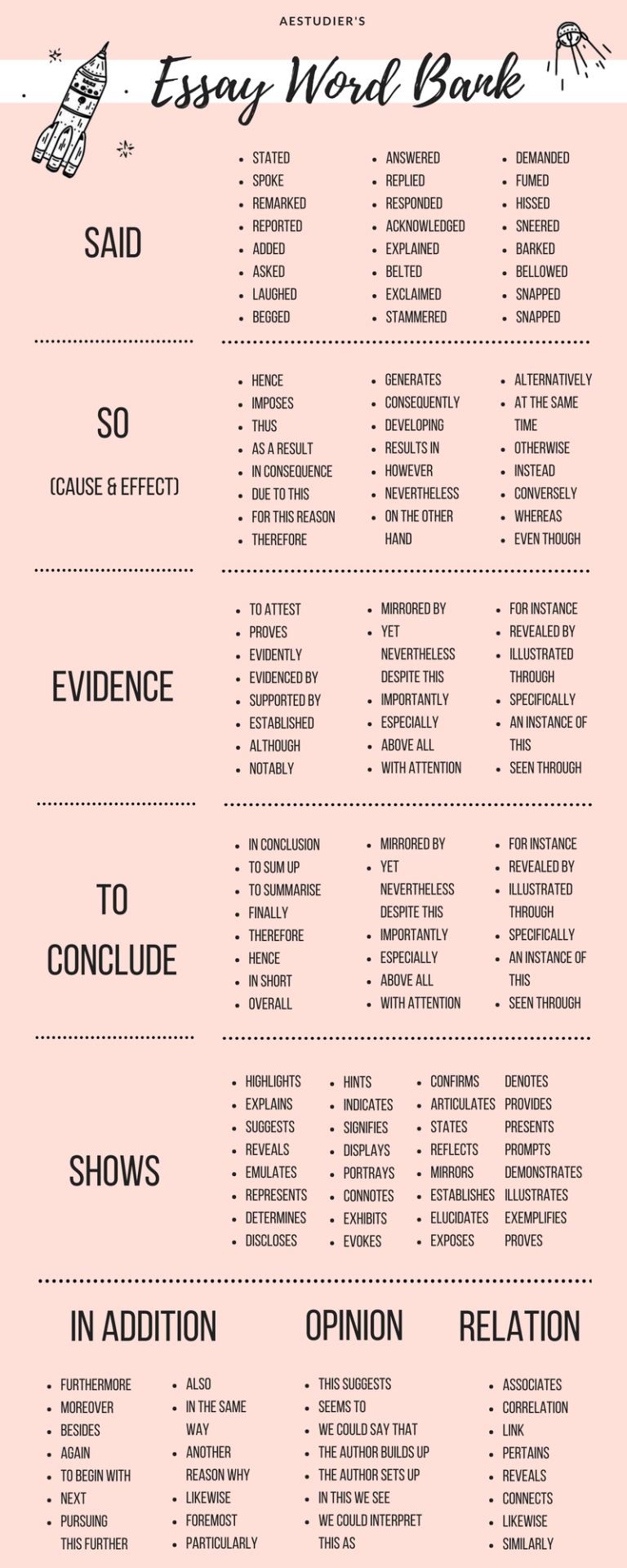
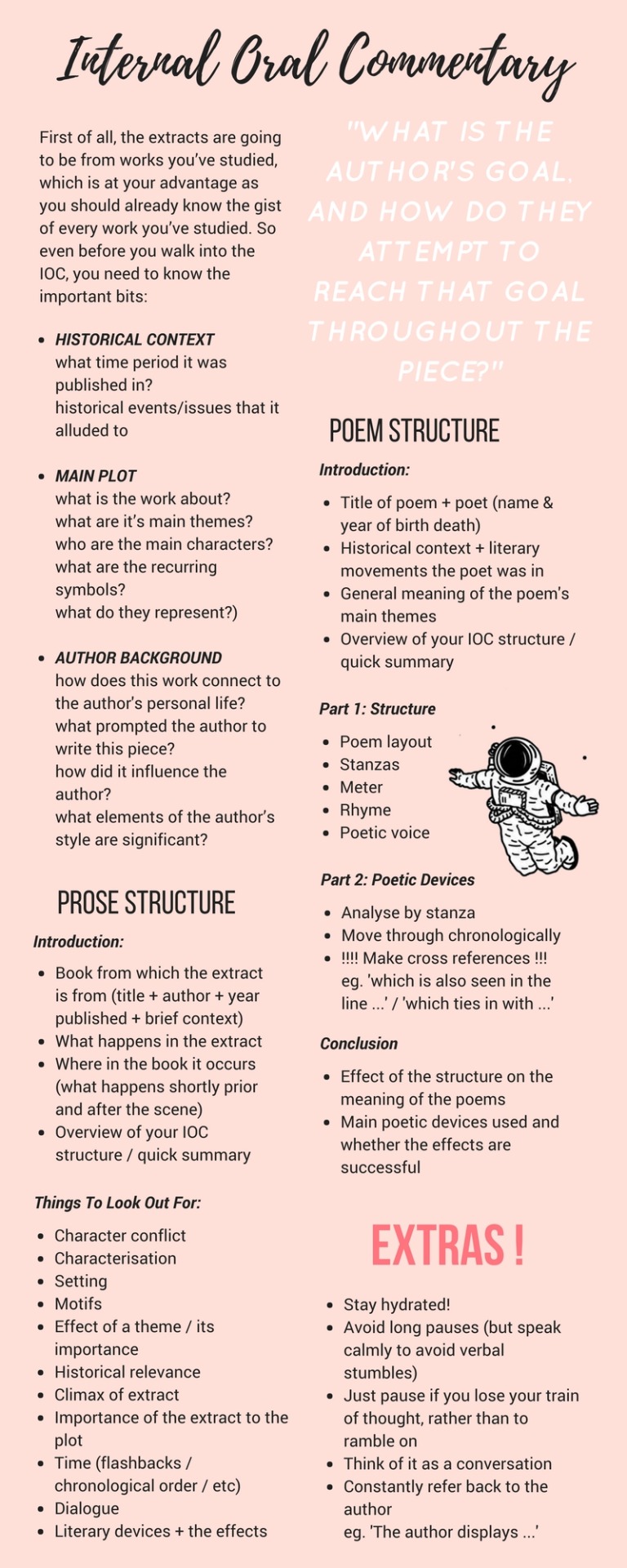
Just completed and submitted the final version of my Extended Essay !!! °˖✧◝(⁰▿⁰)◜✧˖°
So I compiled lists of words that I found super super useful in making it easier for me to finish any essay !! Here is a masterpost of some sort with transition words + key vocabs grouped together for easy access as well as an IB IOC ‘cheat sheet’ I used for my english LAL orals last year (though most commentaries follow a similar structure so its generalisable) ~
Good luck with your essays !!!
… oops just realised I forgot to bullet point one of the lists
41K notes
·
View notes
Text
OH MY GOD whyyyy did no one tell me you’re supposed to send thank-yous after interviews?? Why would I do that???
“Thank you for this incredibly stressful 30 minutes that I have had to re-structure my entire day around and which will give me anxiety poos for the next 24 hours.”
I HATE ETIQUETTE IT’S THE MOST IMPOSSIBLE THING FOR ME TO LEARN WITHOUT SOMEONE DIRECTLY TELLING ME THIS SHIT
445K notes
·
View notes
Photo





Just a quick guide on how I categorise my poems (complete with a little printable for those of you taking WW1 for AS and are studying the Stallworthy collection- I’ve swapped the very last theme on my photocopies ones as I felt that ‘futility/anger’ was stronger than ‘censorship’)
First I write down a massive list of themes that overarch all of the poems I’m studying, and narrow it down. Then, as you can see above, I lay it out so that they’re across the top, with the title and author before, and a further comments/key quotes column as well. After this I work through my anthology chronologically, including all the poems I feel comfortable with (we don’t have to learn the whole collection for this exam, only the ones we choose, which should be around 60-80%). As I work through the poems, I write a little about them in the far right column, and then actively think about what categories they fall under, this way I’m revising, and creating a fabulous resource for myself- win win. Once you’ve decided if a poem embodies a theme, shade/colour away! I draw a faint pencil line underneath each entry so I know where to go up to.
Once you’ve made your template, scan it in/photocopy it so your don’t have to keep redrawing every time you need a new page.
Happy table-ing!
1K notes
·
View notes
Photo


Made a funny little flow chart of key literary characters for my exam to keep my spirits up!
11K notes
·
View notes
Photo

I’ve had a few asks requesting a scan in of my earlier post to make it clearer, and, tah dah!
3K notes
·
View notes
